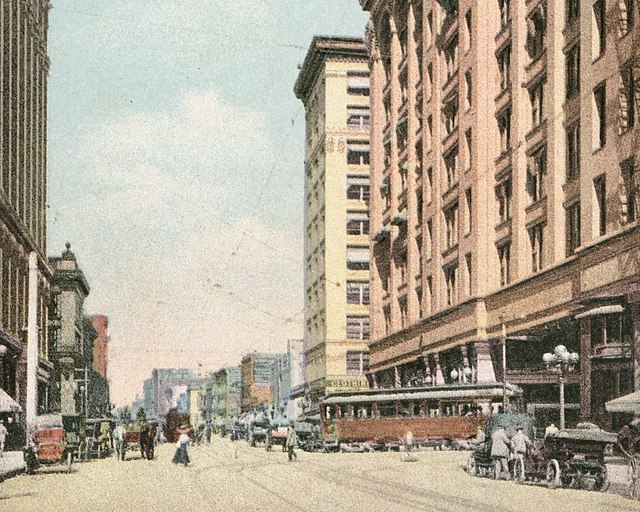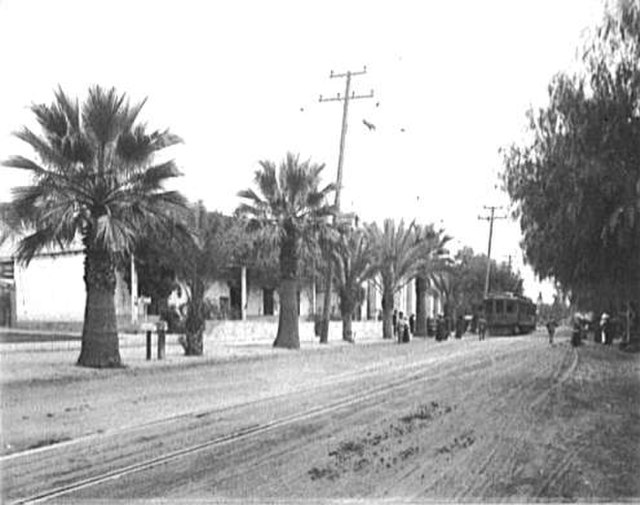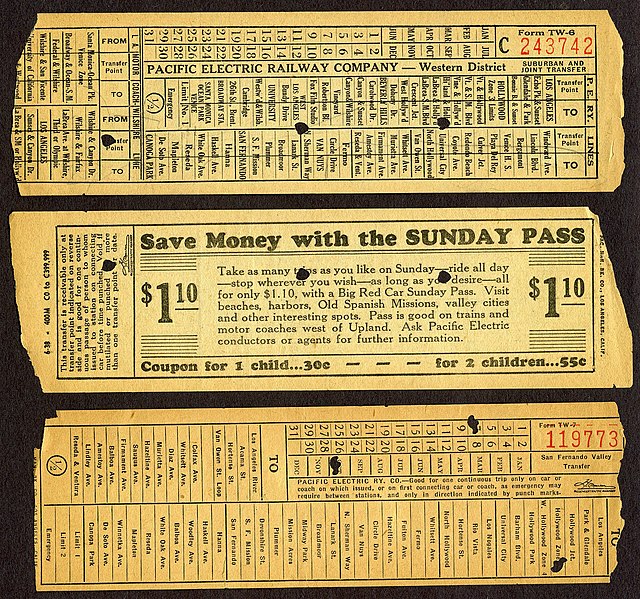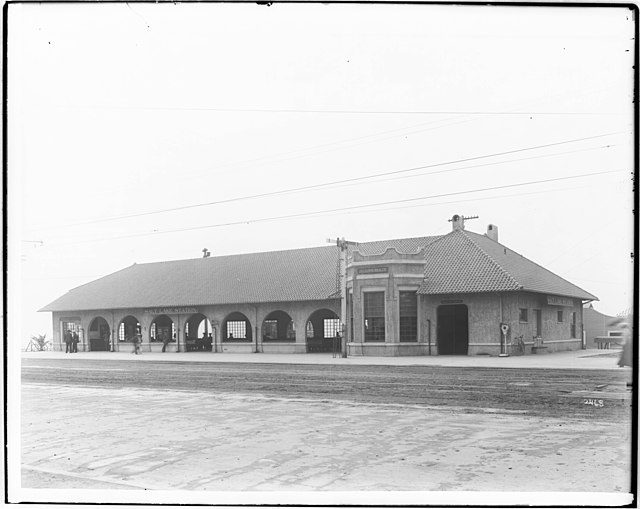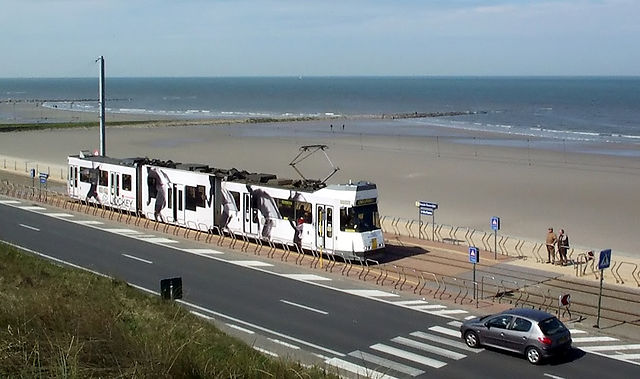The Pacific Electric Railway Company, nicknamed the Red Cars, was a privately owned mass transit system in Southern California consisting of electrically powered streetcars, interurban cars, and buses and was the largest electric railway system in the world in the 1920s. Organized around the city centers of Los Angeles and San Bernardino, it connected cities in Los Angeles County, Orange County, San Bernardino County and Riverside County.
Pacific Electric Building and Main Street
Old Mission Trolley streetcar of the Pacific Electric makes a stop at Mission San Gabriel Arcángel, 1905.
Three PE tickets. The top two (front and back views) between downtown LA and Santa Monica, the bottom for a transfer from Hollywood to the San Fernando Valley.
Pacific Electric & Salt Lake Railroad station in Long Beach, 1905
The interurban is a type of electric railway, with tram-like electric self-propelled rail cars which run within and between cities or towns. The term "interurban" is usually used in North America, with other terms used outside it. They were very prevalent in many parts of the world before the Second World War and were used primarily for passenger travel between cities and their surrounding suburban and rural communities. Interurban as a term encompassed the companies, their infrastructure, their cars that ran on the rails, and their service. In the United States, the early 1900s interurban was a valuable economic institution, when most roads between towns, many town streets were unpaved, and transportation and haulage was by horse-drawn carriages and carts.
An interurban car from the Philadelphia & Western Railroad, which survived long in the interurban business
Kusttram, The Belgian Coast Tram, is a European interurban tramway.
Aigle–Sépey–Diablerets railway line in Switzerland
The Keihan Keishin Line is a Japanese interurban.

